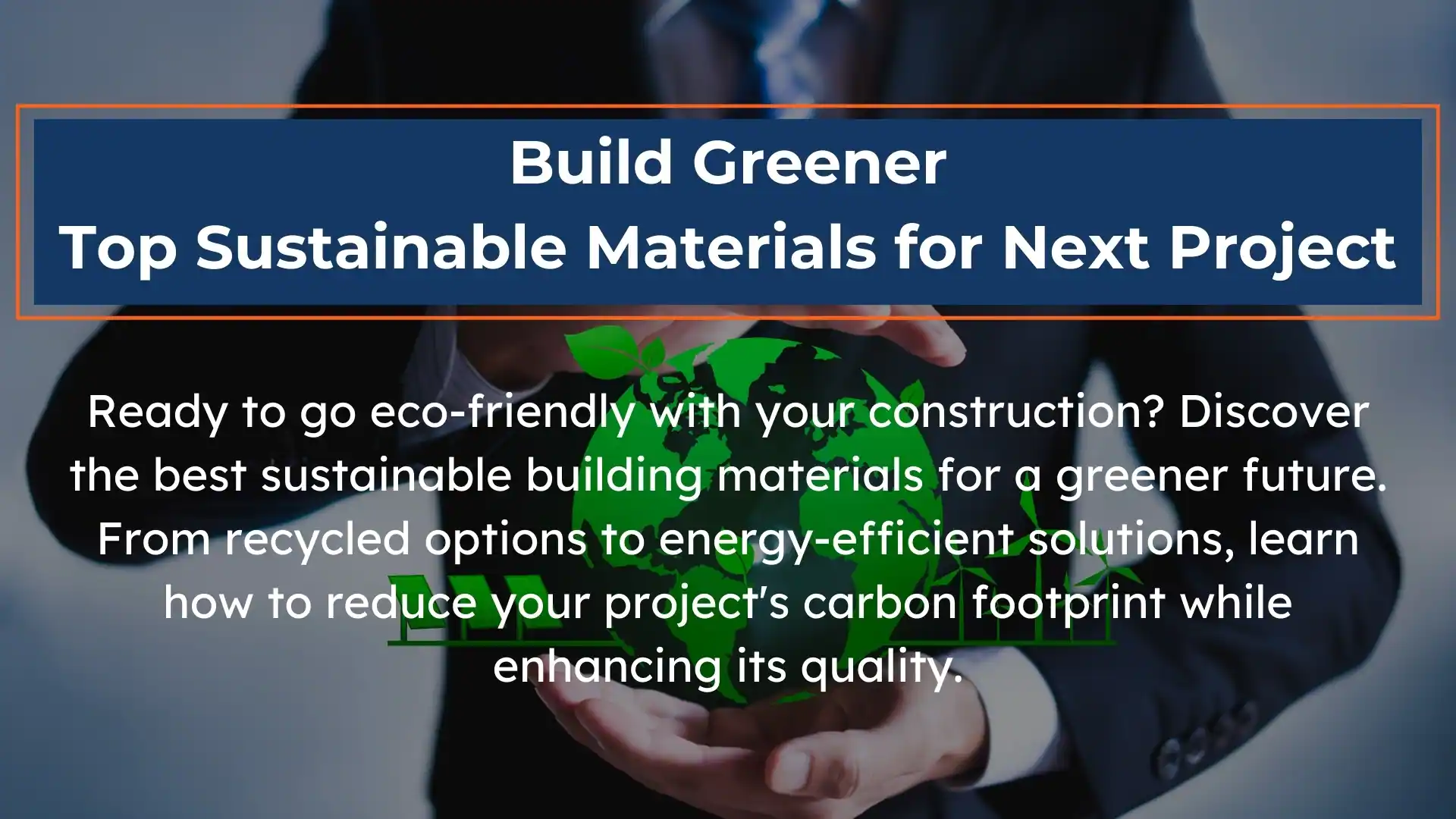Introduction
Are you tired of the same old, boring construction materials? Do you want to build a home that is not only beautiful but also sustainable and eco-friendly? If so, then you need to learn about eco-friendly building materials. These innovative materials offer many benefits, from improving air quality to reducing carbon footprint.
Types of Eco-Friendly Building Materials
Recycled Materials
Recycled materials are excellent Eco-Friendly Building Materials, as they reduce the need for new resources and help minimize waste. Materials such as recycled wood, steel, glass, and plastic can be repurposed for various building applications. Recycled steel, for example, retains its strength and durability while drastically reducing the carbon emissions of producing new steel. Similarly, recycled glass and plastic can be transformed into insulation, tiles, or countertops, offering a second life to materials that might otherwise end up in landfills.
Natural Materials
Natural materials, such as bamboo, cork, straw bale, and rammed earth, are renewable resources that provide unique properties for eco-friendly construction. Bamboo, often touted as a sustainable alternative to traditional wood, proliferates and can be harvested without causing deforestation. Cork, derived from the bark of oak trees, is another renewable material offering excellent insulation and acoustic properties. Straw bale construction, using tightly packed straw, provides natural insulation and is an affordable option for eco-conscious builders. Rammed earth, made by compacting natural materials, creates solid, thermally efficient walls with a distinctive aesthetic.
Bio-Based Materials
Bio-based materials are derived from renewable biological resources and are gaining popularity in sustainable construction. Hemp, flax, and mycelium (a fungal material) are bio-based materials that offer eco-friendly alternatives to traditional building products. Hemp, for instance, can be used to create hempcrete, a lightweight, breathable, and insulating material. Flax is another versatile material that can be used for insulation and textiles.
Sustainable Building Products
In addition to raw materials, many innovative building products are designed to minimize environmental impact. Low-VOC (Volatile Organic Compound) paints, for instance, emit fewer harmful chemicals, leading to better indoor air quality. Energy-efficient windows, which reduce heat loss and gain, contribute to lower energy consumption.
Benefits of Using Eco-Friendly Building Materials
Reduced Environmental Impact
One of the most significant benefits of using eco-friendly building materials is reducing environmental impact. These materials minimize waste, lower pollution, and reduce greenhouse gas emissions. For instance, using recycled materials reduces the need for raw material extraction, often involving energy-intensive processes. Similarly, natural and bio-based materials are sourced from renewable resources, ensuring their use doesn’t deplete finite resources.
Improved Indoor Air Quality
Eco-friendly materials contribute to healthier living environments by improving indoor air quality. Many traditional building materials contain harmful chemicals, such as formaldehyde and VOCs, which can off-gas and negatively impact health. Homeowners can create spaces free from these harmful emissions by choosing natural materials or low-VOC products, promoting better respiratory health and overall well-being.
Increased Energy Efficiency
Eco-friendly building materials can significantly enhance a building’s energy efficiency. Insulating materials like recycled glass or straw bale provide excellent thermal resistance, helping to maintain consistent inside temperatures and lower energy usage for heating and cooling. Windows and doors also reduce energy use by minimizing heat transfer. Over time, these steps can lead to savings on utility bills.
Economic Benefits
While the initial cost of eco-friendly materials can sometimes be higher, they offer long-term economic benefits. Buildings constructed with sustainable materials often require less maintenance and have a longer life, reducing the need for costly repairs or replacements. Additionally, energy-efficient homes have lower utility bills, and properties built with Eco-Friendly Building Materials often see an increase in value, making them a wise investment.
Challenges and Considerations
Availability and Cost
One of the main challenges in choosing eco-friendly building materials is their availability and cost. Some sustainable materials may only be readily available in some regions or have a higher price tag due to limited supply or specialized production processes. However, as demand for these materials grows, prices will decrease, and availability will improve.
Performance and Durability
Another consideration is the performance and durability of eco-friendly materials. While many sustainable materials are as strong and durable as their traditional counterparts, some may require special treatment or maintenance to ensure longevity. It’s essential to research and select materials that meet the specific needs of your project, balancing sustainability with performance.
Design and Construction Considerations
Incorporating eco-friendly materials into building projects may require specialized knowledge and design approaches. Some materials, such as rammed earth or straw bale, may necessitate unique construction techniques that differ from conventional building methods. Working with architects and builders experienced in sustainable construction can help ensure these materials are used effectively and safely.
Conclusion
Eco-friendly building materials are necessary for a sustainable future. By choosing recycled, natural, bio-based, and sustainable products, we can lower our environmental impact, improve our health, and create energy-efficient homes that stand the test of time. Contact Al Arz to learn more about eco-friendly building materials and how they can be incorporated into your construction project.
FAQ’s
What are eco-friendly building materials?
Eco-friendly building materials have a minimal negative environmental impact throughout their lifecycle.
What are the benefits of using eco-friendly building materials?
Using eco-friendly building materials can help reduce your carbon footprint, improve indoor air quality, and increase energy efficiency.
What are some examples of eco-friendly building materials?
Examples of eco-friendly building materials include recycled, natural, bio-based, and sustainable building products.
Are eco-friendly building materials more expensive than traditional materials?
While eco-friendly materials may have a higher upfront cost, they can often lead to long-term cost savings through reduced energy consumption and maintenance.









